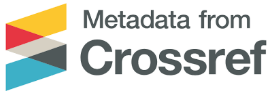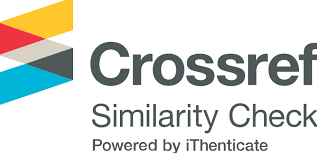Durability of Eucalyptus urophylla and Acacia mangium veneer modified by N - Methylol and Cashew nut shell liquid against to subterranean termite Coptotermes formosanus Shiraki
Keywords:
Acacia Mangium, Cashew nut shell liquid, Coptotermes formosanus Shiraki, Dimethylol dihydroxyethyleneurea (DMDHEU), Eucalyptus urophylla, N - methylol,, termite, veneerAbstract
Eucalyptus urophylla and Acacia mangium veneers were impregnated with N -methylol (Dimethylol dihydroxy ethyleneurea - DMDHEU) and Cashew nut shell liquid (CNSL) following the conditions of vacuum at 0.3kgf/cm2 for 1.5h
and pressure at 7kgf/cm2 for 1.5h. The impregnated veneer were then dried to moisture content of 10 - 12% and treated at temperatures of 120oC - 2h and 103o C - 24 respectively. The subterranean termite Coptotermes formosanus Shiraki was applied for testing durability of the treated veneers. After 9 weeks of testing, the samples were collected to evaluate the resistance against to subterranean termite following the criteria of mass loss and mark system. The DMDHEU treated veneer with weight percent gain (wpg) at 9.4% và 14.7%
resulted respectively the mass loss 5.1% và 0.8% due to termite attack, while untreated veneers got mass loss 9.5%. The results showed a similar level of mass loss 5.5% and 1.1% in the case of Acacia mangium veneers treated with DMDHEU when the wpg reached respectively 8.3% 13.8%, the mass loss of
control was 12.8%. When Eucalyptus urophylla and Acacia mangium veneers treated with CNSL, the weight percent gained up to 52.2 - 52.6% resulted almost no mass loss (0.2%/mark 10) showing very durable due to termite attack. In
overall, the thermo - chemically treated veneers with DMDHEU at wpg 13.8 -14.7% and CNSL at 52.2% can be very durable against to termite attack
References
1. American Society of Testing and Materials, ASTM D 3345, 1986. Standard method of laboratory evaluation of wood and other cellulosic materials for resistance to termites, Philaadelphia, U.S.A.
2. Bùi Văn Ái, 2008. Nghiên cứu sử dụng dầu vỏ hạt Điều làm thuốc bảo quản lâm sản, Luận án Tiến sỹ kỹ thuật, Viện Khoa học Lâm nghiệp Việt Nam.
3. Curling S.F., and Murphyy R.J., 1999. The effect of artificaial ageing on the durability of wood - based board materials aganins basidiomycete decay fungi, Wood Science and Technology 33: 245 - 57 .
4. Grace J.,K, 2003. Termite resistant wood products. Sociobiology 41: 123 - 129.
5. Hadi Y.S, Westin M, Rasyid E., 2005. Resistance of furfurylated wood to termite attack, Forest Prod J 55: 85 - 88.
6. Hill,C., 2006. Wood modification: chemical, thermal and other processes john Wiley and Sons Ltd, England.
7. Howick. C.D, Creffield J.W., 1983. Arapid kield bioassay technique with subterranean termites. Document IRG/ 1188. International Research Group on Wood preservation, Stockholm.
8. Imamura Y., Nishimoto K., 1986. Resistance of acetylated wood to attack by subterrancean termites. Wood Res Kyoto 72: 37 - 44.
9. Krause A, Wepner F, Xie Y, Milit H., 2008. Wood protection with DMDHEU and its derivatives, In: Development of commercial wood preservatives, Ddited by Schultz, Militz, Freeman, Goodell, Nicholas, ACS
Symposium Series 982.
10. Mititz H., 1993. Treatment of timber with water soluble dimethylol resins to improve their dimensional stability
and durability, Wood Sci Technol 27: 347 - 355.
11. Militz H, Schaffert S, Peters B.C., Fitzgerald C.J., 2008. Termite resistance of DMDHEU - treated wood. Document IRG/WP 08 - 40401. Interantional Research Group on Wood Preservation, Stockholm.
12. Nguyễn Hồng Minh, 2008. Wood Modification with Hydrophobation Textile Finishing Agents. Sierke Verlag. Göttingen, Germany.
13. Nicholas D, Williams A., 1987. Dimensional stabilization of wood with dimethyloy compounds. Paper presented to the International Reearch Group (Stockholm) on Wood Protection, 18th Annual Meeting, Honey Harbour, Ontario, Canad, Doc. No. IRG/WP 3412.8pp.
14. Schaffert S, Nunes L, Krause A, Militz H., 2006. Resistance of DMDHEU treated pine wood aginst termite and fungi attack in field testing according to EN 252. Results after 30 months. Papwr presented to the International Research Group (Stockholm) on Wood Potection, 37th Annual meeting, Troms, Norway, Doc, No. IRG/WP 06 -40354.10pp.
15. Sanderman, W., Augustin, H., 1963: Chemical investigation on the thermal decomposition of wood - Part III: Chemical investigation on the course of decomposition, Holz als Roh - und Werkstoff 22(10): 377 - 86.
16. Yusuf S, Imamura Y, Takahashi M, and Minato K., 1995. Properties Enhacement of LVLs Modified with Some cross - linking Agents.
17. Yusuf S, Imamura Y, Takahashi M, and Minato K., 1995. Biological resistance of wood chemicaaly modified with non - formaldehyde cross - linking agents. Mokuzai Gakkaishi 4192): 163 - 169.








